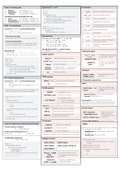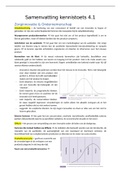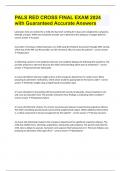Overig
Cheat sheet for Data Management for Data Analytics (JBI050)
This is a cheat sheet for the course Data Management for Data Analytics provided at the TU/e. All information is summarized on two sides of an A4 paper, color coded based on the subject.
[Meer zien]









